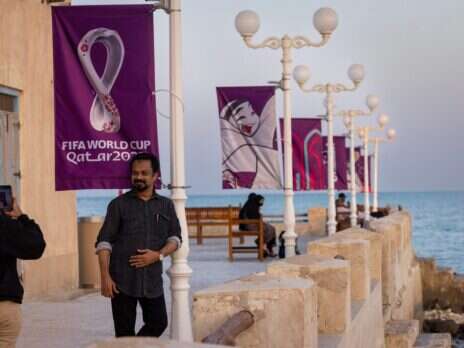When David Blunkett resigned from the Cabinet for a second time, he
gave national newspaper editors a headache. By choosing – if that’s the
right word – to go early in the day, Blunkett forced the dailies to
play catch up. But, of course, thanks to the internet the papers could
participate in what was a perfect rolling news event. And as usual on
the web, they rubbed shoulders with the big broadcasters: the
boundaries between different media are becoming increasingly blurred in
this digital world.
All the major sites followed the story from
its origins, the cancelled committee meeting and its implications
(“Blunkett expected to resign”) through to official corroboration
(“Blunkett has quit, Downing Street confirms”)n and finally to the
Blunkett press conference, a grudging mea culpa. It was during this
third stage that a number of sites moved away from the straight
resignation headline.
Both the Telegraph and Sky News went with
“I’m paying the price”, while Channel 4 News and the BBC went with
Blunkett’s “mistakes”.
The Guardian managed to get both points
across in its intro text, but – like The Independent, The Times and The
Sun – stuck with a variant of “Blunkett resigns”
headline well
into the afternoon, missing an opportunity to clearly signpost to
readers that the story had moved on. The Sun placed its story,
logically enough, in its Breaking News slot, but didn’t deem it worthy
of a picture; not while box office of the calibre of Roy Keane and
Jennifer Aniston were around. For everyone else, the picture was a big
part of telling the story.
The Independent was among the best,
finding an image that summed up the personal anguish. The effect was
undoubtedly enhanced by the oversized pillar box format. Until
recently, web designers have tended to limit picture size in order to
spare dial-up users achingly slow loading times. But now broadband is
becoming the norm (households with broadband connections overtook those
with dial-up connections for the first time earlier this year),
designers have a freer hand to play with images.
The BBC also
played with formats. Conventionally, a dozen or more headlines frame
the top-right side of its news front page. Recently, the BBC has
introduced an alternative where this detritus is pushed aside so the
lead story can extend – with a larger than normal headline font size –
all the way across the page. Understandably, it used the latter for the
Blunkett story.
All three broadcasters carried video clips.
Unlike its rivals however, Sky News chose not to carry the Blunkett
press conference in full. It was the wrong call given the”presser”
contained nearly an hour of high drama.
Sky did, however, make
much of the fact that political editor Adam Boulton called the
resignation ahead of the wires and well ahead of official confirmation.
“How Sky Broke The Blunkett News” was probably just the right side of
gratuitous back-slapping.
If the broadcasters were playing to their strengths, they weren’t the only ones with multimedia on offer.
Guardian
Unlimited, as it has been doing for some time, armed its journalist
with a tape recorder. Hence “Audio: Michael White at Westminster”.
And
while The Guardian was stealing some of the broadcasters’ clothes it
was equally noticeable how the Q&A, timeline, back story and
analysis – once the preserve of the print press – found a home on the
broadcast sites. By the next day the story had moved from Blunkett to
the long-term prospects of the Blair Government. The terror bill vote –
which came at the right end of the day for the press – gave the story
fresh impetus on day two. The internet, meanwhile, rolled on to other
things.
Email pged@pressgazette.co.uk to point out mistakes, provide story tips or send in a letter for publication on our "Letters Page" blog




